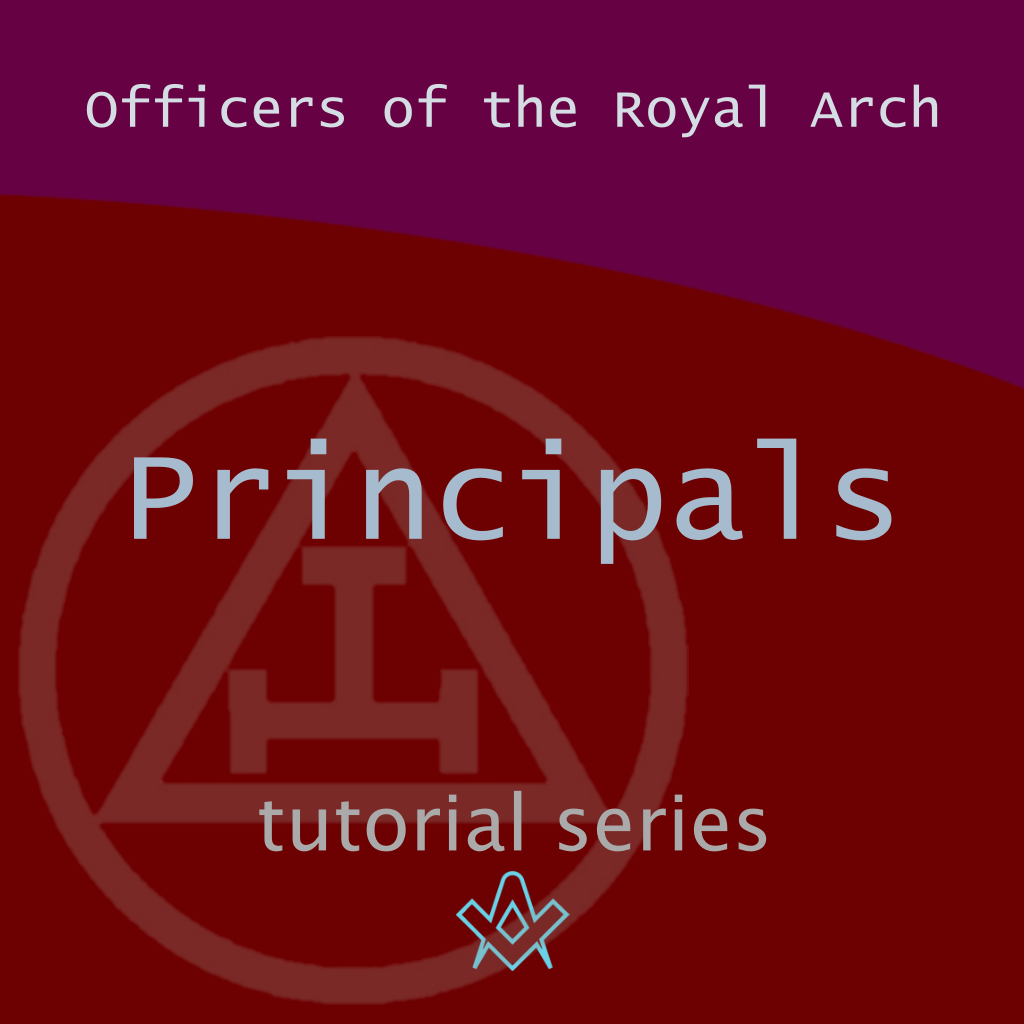Who are the Principals ? – Spirituality
Continuing on from the Officers of the Lodge 6 part series, we progress on to the Royal Arch.
This is the last article in the tutorial series on the Royal Arch Officers.
Each part published monthly in The Square.
Royal Arch Officers: Janitor, Sojourners, Scribe Nehemiah, Scribe Ezra, Principals.
The Principals – Zerubbabel, Haggai and Joshua
In 539 BC, Cyrus King of Persia conquered Babylon and gave permission to the captive Jews to return to their homeland and rebuild Jerusalem and the temple.
The returning Jews were led by the governor Zerubbabel and the High Priest Joshua. (Ezra 2: 1-2)

Soon after the exiles arrived in Jerusalem, Zerubbabel and Joshua set up an altar (Ezra 3:1-2) and the following year laid the foundation of the temple (Ezra 3:8-11).
However, they met with some opposition from neighbouring tribes which discouraged the builders and the work stopped (Ezra 4:1-5).
Some sixteen years later the prophets Haggai and Zechariah, upon seeing the lethargy of the people, inspired Zerubbabel, Joshua and the people to continue with the work on the temple (Ezra 4:24; Ezra 5:1-2; Haggai 1:1-11).
As the work continued, Haggai and Zechariah brought further messages of inspiration to the people through Zerubbabel and Joshua (Haggai 1:12-15; Haggai 2:1-9).
The reason for the rebuilding of the temple was in preparation for the coming of the Messiah. In anticipation, the Jews conducted a coronation ceremony, the person they should have crowned was Zerubbabel, for he was not only governor but also a prince in the line of David. (Matthew 1:6; Matthew 1:12; Matthew 1:16).
However, they crowned the priest Joshua instead, to negate any thoughts the Persians may have held that their action might be treasonous. The coronation emphasized the joint rule of Joshua and Zerubbabel, the priest and the prince (Zechariah 6:9- 14).
Sadly, the people’s renewed devotion was short-lived. Joshua’s sons did not truly follow God and, like many of their countrymen, married unbelieving non-Jewish women.
When rebuked by Ezra, they put away their foreign wives and offered sacrifices for their wrongdoing (Ezra 10:18-19).
– [Source: Bridgeway Bible Dictionary]
Reflection
Let us follow the writings of W. L. Wilmshurst in his book The Meaning of Masonry.
Wilmshurst puts forward the idea that the Principals relate to your spirituality.
How so? Well, Jerusalem represents your faith and the temple represents the centre of that faith. That point within a circle from which a Mason cannot deviate.
The priest and the prince inspired their workforce to build the temple but it needed the prophet Haggai to encourage them when they met opposition and became disenchanted.
And so with your spirituality. You have found your faith after a long journey of discovery with like minded Companions.
Having found the centre of your faith that bright light, that meaning which brings with it joy and happiness, you look towards a bright future.
But should you flounder, as we all do from time to time, you are reminded of Haggai, who encouraged and inspired Zerubbabel, Joshua and their people when their faith met opposition.
Conclusion
Your spirituality is the deepest held of your values and the meanings by which you live. It is that inner path that discovers the very essence of your being.
It is “Royal” as it the highest held of your beliefs. It is “Visionary” as those beliefs are your future, and it is “Holy” as you dedicate yourself to the teachings of your God.
Action
Enjoy every moment of every day knowing that those “Three Great Lights” will give you strength to endure, wisdom to comprehend and beauty to see.
Footnotes
References
The Meaning of Masonry. W. L. Wilmshurst, 1920
‘Faith’. John Bishop, Stanford Encyclopedia of Philosophy March 2016 – https://plato.stanford.edu/entries/faith/
The Bible
Cambridge Dictionary – dictionary.cambridge.org
Bridgeway Bible Dictionary
Holy Royal Arch Ritual Book
Article by: Stephen J. Goulding
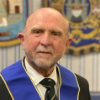
Stephen was initiated into Freemasonry in 1978 in Tylney Lodge No. 5856 (UGLE). He was Master in 1989 & 2004.
He was Master of the Lodge of Union 38 (UGLE) in 2018. He is also a PZ in the Holy Royal Arch and PM in the Mark Degree.
Stephen served 30 years in the Metropolitan Police Service (London, England) before going into education in 2000, where he became a college lecturer and a mentor for both the college and the University of Greenwich (London, England). Now retired, he teaches Tai Chi and Qigong in the community.
Facebook: Steve Goulding-Tai Chi West Sussex–Chi at Chi

The Meaning of Masonry
By W.L. WILMSHURST
Although the Freemasons number over six million members worldwide, they are a very secretive organization. the general public today thinks of them as a social fraternity like the Rotary Club, but that is hardly the whole truth.
By mysterious coincidence, it seems, many Masons have been major figures in modern history. many of the Founding Fathers of the United States—including George Washington, Thomas Jefferson, Benjamin Franklin, and Paul Revere—were Freemasons.
Giuseppe Garibaldi, the Italian freedom fighter, was also one, as were the composers Franz Joseph Haydn and Wolfgang Amadeus Mozart and writers François Marie Arouet de Voltaire and Johann Wolfgang von Goethe.
The Meaning of Masonry explores the beliefs behind the order, its cryptic rites and symbols, and uncovers its ultimate purpose.
Recent Articles: in this tutorial series
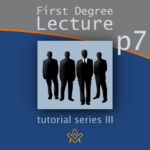 William Preston (1742 – 1818) gives his lectures in the form of a Catechism – questions and answers - and broken down into seven bite size chunks. This article is the first of the seven part series presented by Steve Goulding |
 William Preston (1742 – 1818) gives his lectures in the form of a Catechism – questions and answers - and broken down into seven bite size chunks. This article is the first of the seven part series presented by Steve Goulding |
 William Preston (1742 – 1818) gives his lectures in the form of a Catechism – questions and answers - and broken down into seven bite size chunks. This article is the first of the seven part series presented by Steve Goulding |
 William Preston (1742 – 1818) gives his lectures in the form of a Catechism – questions and answers - and broken down into seven bite size chunks. This article is the first of the seven part series presented by Steve Goulding |
 William Preston (1742 – 1818) gives his lectures in the form of a Catechism – questions and answers - and broken down into seven bite size chunks. This article is the first of the seven part series presented by Steve Goulding |
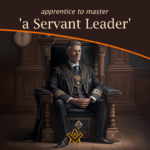 Apprentice to Master, “a Servant Leader”. Freemasonry is a learning platform used to improve a lifestyle which is morally, educationally and spiritually sound. To guide a person through life in order to be the best they can be. A Master, or ‘Servant Leader,’ develops those people in their care. They are someone who can guide others using the principles of Freemasonry - By Stephen J. Goulding |
 William Preston (1742 – 1818) gives his lectures in the form of a Catechism – questions and answers - and broken down into seven bite size chunks. This article is the second of the seven part series presented by Steve Goulding |
 William Preston (1742 – 1818) gives his lectures in the form of a Catechism – questions and answers - and broken down into seven bite size chunks. This article is the first of the seven part series presented by Steve Goulding |
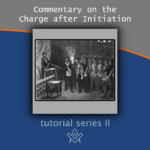 Commentary on the Third Degree Charge The Third Degree Charge invites the candidate to reflect on his life as both a ‘moral’ and ‘educated’ man, and to contemplate on what may be missing in his life. The ‘genuine secrets of a Master Mason’. |
 Commentary on the Second Degree Charge In the second degree we learn about being an educated man. Skilful, not only in the Craft itself but also how to communicate and manage others. This Commentary looks at the second degree charge in detail. |
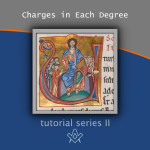 The ‘Old Charges’ have come down to us, containing the rules and regulations by which Lodges should be run and the moral and social standards to which each Lodge member should adhere. |
 Steps to the Making of a Master. The symbolism of each step of the winding staircase is to continue your personal development throughout your life, right up to your last breath in this world. |
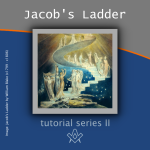 On the First Degree tracing board the most dominant feature is Jacob’s Ladder stretching from Earth to Heaven. Being straight, it is the shortest and quickest way to reach heaven, and being straight you can see the end goal. |
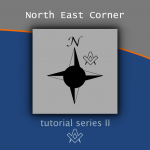 The North East Corner: A Lesson on Charity The ritual of the North East corner is a powerful piece of teaching. Let us examine that piece of ritual more closely; the lesson on charity. |
 When we look at the ritual book the deacons are told to ‘perambulate’ with the candidate. So what does this really mean? |
 The taking of a ‘Vow of Fidelity’. Oaths, Vows and Covenants |
 Morality veiled in allegory and illustrated by symbols A phrase that immediately comes to mind when describing Freemasonry – Morality veiled in allegory and illustrated by symbols. Let us have a look at what this phrase actually means. |
 Officers of the Royal Arch - The Principals The Principals' role in the Royal Arch, representing the pinnacle of spiritual leadership. Their esoteric significance lies in the unity of the three aspects of the divine, emphasizing the importance of harmony and balance in attaining spiritual enlightenment. The Principals embody the ultimate goal of the Royal Arch journey - the realization of divine wisdom. |
 Officers of the Royal Arch - Scribe Ezra Scribe Ezra is portrayed as a crucial figure within the Royal Arch, responsible for interpreting and teaching divine laws. The significance of his role lies in the pursuit of understanding and applying sacred knowledge, emphasizing the transformative power of wisdom when applied to one's life. |
 Officers of the Royal Arch - Scribe Nehemiah Scribe Nehemiah's responsibility within the Royal Arch, is that of preserving the sacred teachings. Scribe Nehemiah symbolizes the importance of maintaining accurate records and upholding the integrity of divine knowledge, thus reflecting the value of safeguarding spiritual wisdom for future generations. |
 Officers of the Royal Arch - The Sojourners The Sojourners, are seekers of truth, their journey symbolizes the spiritual path to enlightenment. Their role in rediscovering lost wisdom highlights the esoteric concept of regaining divine knowledge through perseverance and self-discovery. |
 Commentary on the Charge after Initiation A more detailed explanation in order for us to understand the Charge after Initiation |
 Officers of the Royal Arch - The Janitor The Janitor, is a crucial officer in the Royal Arch. Symbolically, the Janitor represents the guardian of sacred knowledge, ensuring only worthy individuals gain access. This function emphasizes the importance of maintaining spiritual purity and safeguarding the mysteries of the Royal Arch. |
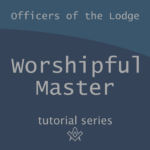 Officers of the Lodge - Worshipful Master Worshipful Master: the highest-ranking officer in the lodge, is the embodiment of wisdom and authority. The Worshipful Master guides the brethren on their spiritual path, representing the divine light that illuminates the Masonic quest for knowledge and self-discovery. |
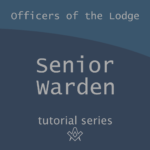 Officers of the Lodge - Senior Warden Senior Warden: embodies the essence of strength and stability within the lodge. As the pillar of support for the Worshipful Master, the Senior Warden symbolizes the fortitude required on our spiritual journey, inspiring us to persevere in the face of adversity |
 Officers of the Lodge - Junior Warden Junior Warden: Ensuring the well-being of the brethren during the lodge's hours of refreshment. Representing the virtue of temperance, the Junior Warden reminds us to find balance in our lives and cultivate moral discipline in our pursuit of truth. |
 Officers of the Lodge - Deacons Deacons: The messengers and intermediaries within the lodge. Representing the communication between the material and the spiritual realms, Deacons symbolize the importance of transmitting knowledge and wisdom as we strive for personal growth and enlightenment on our Masonic journey. |
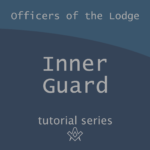 Officers of the Lodge - Inner Guard Inner Guard: Is the first line of defence against unworthy intruders, the Inner Guard represents our inner conscience and the personal responsibility we have to safeguard the integrity of our spiritual journey. |
 Tyler: The significance as the protector of the lodge's secrets and harmony. Tasked with guarding the entrance, the Tyler symbolizes our spiritual and moral boundaries, ensuring only worthy candidates are allowed into the sacred space of Freemasonry's teachings and rituals. |
masonic knowledge
to be a better citizen of the world
share the square with two brothers

click image to open email app on mobile device


